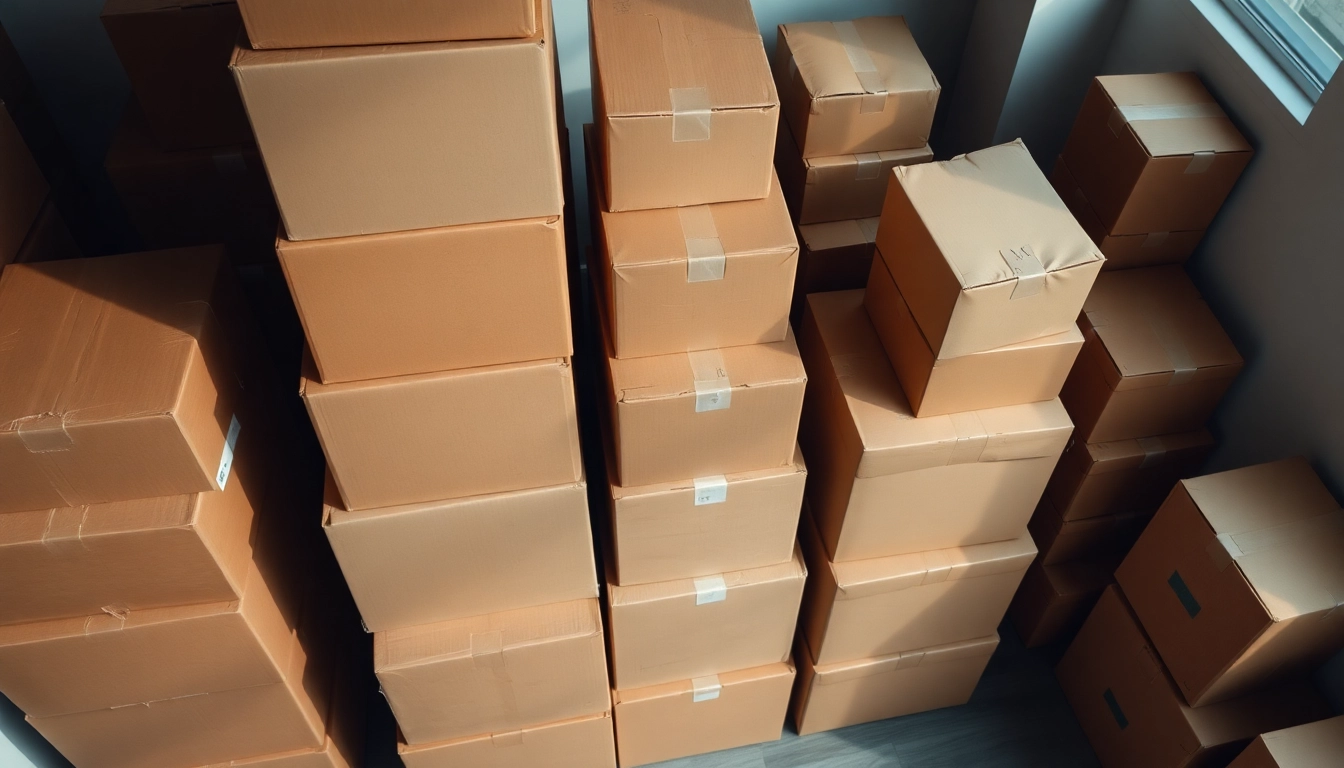
Top Moving Boxes Choices for a Seamless and Efficient Move
Understanding the Types of Moving Boxes
When preparing for a move, understanding the different types of moving boxes available is crucial for a seamless experience. Each type of box serves a specific need, whether for packing clothes, fragile items, or bulky furniture. Let’s delve into the variety of moving boxes and what makes each type suitable for your needs.
Standard Moving Boxes Overview
Standard moving boxes are the backbone of any packing strategy. These boxes typically come in several sizes: small, medium, and large. The small size is ideal for heavy items like books or kitchen utensils, medium boxes can be used for apparel and shoes, while large boxes are more suited for lightweight items such as blankets and pillows. Standard boxes are generally made of double-walled cardboard for extra durability, ensuring your belongings are well protected during transit.
Specialty Boxes for Fragile Items
For items that require extra protection, specialty boxes are designed specifically for fragile objects. These include:
- Dish boxes: Designed with extra padding and dividers to hold dishes securely.
- Pictures and mirror boxes: Tall boxes that safely accommodate large framed items.
- Wardrobe boxes: Tall boxes with a hanging rod that allows you to transfer your clothes directly from your closet.
Using these specialty boxes can greatly reduce the risk of damage to your delicate belongings during the moving process.
Cost-Effective Solutions for Moving Boxes
Moving can be an expensive undertaking, but there are plenty of cost-effective solutions for acquiring moving boxes. Many retailers offer discounts for bulk purchases, while you might also consider searching garage sales, local classifieds, or community online marketplaces for gently used boxes. Additionally, many large grocery or liquor stores will often offer their boxes for free, which can significantly reduce your packing costs.
How to Choose the Right Moving Boxes
Selecting the right boxes is essential to ensure that your moving day goes smoothly. With an array of sizes and types to choose from, here’s how to narrow down your options effectively.
Assessing Your Moving Needs
The first step is to evaluate what items you need to pack. Consider the size of your move: is it a small apartment or a multi-bedroom house? Categorizing them by type – clothing, kitchenware, electronics, etc. – provides a better understanding of how many boxes you will require and what sizes will work best.
Comparing Box Sizes and Types
When comparing box sizes, consider the weight and fragility of your items. Heavy items should be placed in smaller boxes to avoid overloading and risking damage when lifting. Conversely, lighter items can fill larger boxes. Always prioritize durability in material as well; a sturdy box will hold up against the rigors of moving and stacking.
Finding Affordable Moving Boxes
The quest for affordable moving boxes doesn’t have to be daunting. Apart from thrift purchases, online retailers often have sales that can be leveraged. Websites such as U-Haul and Home Depot frequently provide options that cater specifically to those on a budget. By comparing prices and looking for coupons, one can keep moving costs down significantly.
Where to Buy Moving Boxes
Knowing where to purchase moving boxes is as essential as understanding their types. Here’s an overview of the best places to find them.
Top Retailers for Moving Boxes
Some traditional brick-and-mortar stores stand out for their wide selection of moving boxes:
- Home Depot: Known for providing a variety of box sizes and moving supplies, including packing tape and padding materials.
- Walmart: Offers an extensive range of affordable options, including boxes designed for specific needs.
- U-Haul: As specialists in moving, they sell both new and used boxes as well as packing supplies.
Online Platforms for Convenient Purchasing
For those who prefer shopping from the comfort of their homes, online marketplaces like Amazon and Uboxes offer competitive pricing and home delivery. These platforms typically have customer reviews that can help guide you in making informed decisions about the boxes you select.
Local Options for Free and Low-Cost Boxes
In local communities, options for obtaining moving boxes often exist within a thriving DIY culture. Check local stores that deal in high-consumption goods, such as liquor and grocery stores, where boxes are often available for free. Additionally, local online marketplaces like Facebook Marketplace can provide a plethora of listings for used boxes or even cardboard boxes available free of charge.
Essential Packing Tips with Moving Boxes
Once you’ve acquired your moving boxes, packing them efficiently is crucial to ensure everything fits well and remains intact during your move. Here are some essential tips to keep in mind.
Best Practices for Packing Your Boxes
To pack your boxes effectively, follow these key practices:
- Start with heavy items: Place heavier items at the bottom of the box to provide a stable base.
- Use fillers: Make use of bubble wrap or packing paper to fill any gaps, preventing movement during transit.
- Avoid overpacking: Don’t stuff boxes to the brim. It’s better to split items into multiple boxes than risk breakage.
- Seal securely: Use high-quality packing tape to secure the bottoms and tops of your boxes, ensuring they don’t spill open during transport.
Labeling and Organizing for Easy Access
Labeling is another critical component of an effective moving strategy. Clear labels like “Kitchen,” “Bedroom,” or “Fragile” should be used to identify what’s inside each box. Consider numbering your boxes and keeping an inventory list; this way, you can track what you have and where it is. You’ll be thankful for this organizational effort on moving day!
Safeguarding Fragile Items in Moving Boxes
When packing fragile items, extra attention is required. Consider these tips:
- Wrap each item individually: Use bubble wrap or packing paper to ensure that no two fragile items touch.
- Use dish packs: These boxes are designed specifically for dishes and glassware and provide extra protection.
- Place vertically: Always pack items like glasses standing upright to prevent them from breaking during the move.
Environmental Considerations with Moving Boxes
With increasing awareness of environmental issues, it’s essential to consider the sustainability of your moving practices, including the boxes you choose. Here are some environmental considerations when sourcing and using moving boxes.
Recycling and Reusing Moving Boxes
After the move, many boxes can be stored for future use or recycled. Flatten boxes and store them neatly to avoid clutter, making them available for future moves or shipments. When disposing of boxes, check local recycling guidelines to ensure you’re following best practices for cardboard disposal.
Choosing Eco-Friendly Box Options
More retailers now offer eco-friendly packing materials made from recycled materials or sustainable sources. Investing in biodegradable packing peanuts and recycled cardboard can significantly lessen your environmental impact during a move.
Community Resources for Used Moving Boxes
Engaging with community resources can benefit both the environment and your wallet. Many local organizations and websites facilitate the exchange of used boxes. Engaging in box swaps or community buy/sell groups can help you find moving boxes while simultaneously allowing others to get what they need without waste.
